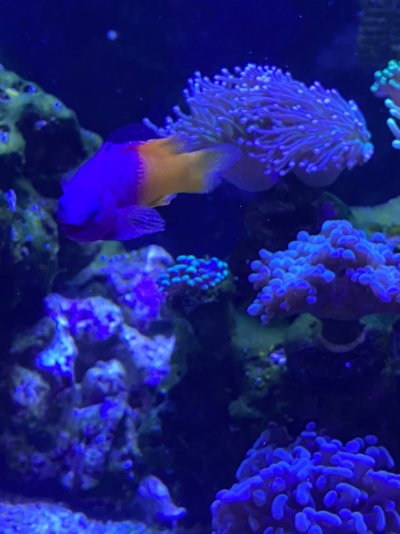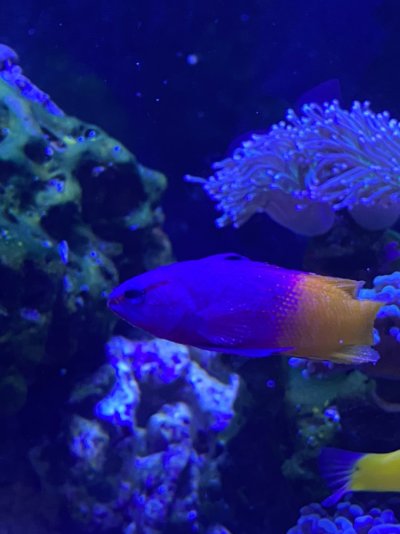Hey guys, very upset but I believe my gramma has Ich. It has been flashing and now has some pretty large white dots all over it’s body. I thought I saw them a week ago but they must’ve went away and came back stronger.
My question is what do I do? I don’t have a QT, my one LFS does QT and doesn’t run copper in tanks etc so I never bothered. I haven’t added any fish in 3 months or so. My most recent addition was a conch snail from another LFS predator tank about a month ago, could that have carried Ich?
I have selcon, garlic guard and Vitachem already that food gets soaked in daily.
The reason I debate running and grabbing a QT tank is first my DT is only a 40 breeder, and I plan on purchasing a 120-150 gallon tank during Black Friday. Should I try and do some “Ich management” and hope for the best until Black Friday and I can just use my 40 as a QT and move everything else over? Or do you think I can manage to fit 7 fish in a 20 gallon QT? because of how stressful it would be to move them all and then cram them in a new tank. Idk what to do..


My question is what do I do? I don’t have a QT, my one LFS does QT and doesn’t run copper in tanks etc so I never bothered. I haven’t added any fish in 3 months or so. My most recent addition was a conch snail from another LFS predator tank about a month ago, could that have carried Ich?
I have selcon, garlic guard and Vitachem already that food gets soaked in daily.
The reason I debate running and grabbing a QT tank is first my DT is only a 40 breeder, and I plan on purchasing a 120-150 gallon tank during Black Friday. Should I try and do some “Ich management” and hope for the best until Black Friday and I can just use my 40 as a QT and move everything else over? Or do you think I can manage to fit 7 fish in a 20 gallon QT? because of how stressful it would be to move them all and then cram them in a new tank. Idk what to do..



















